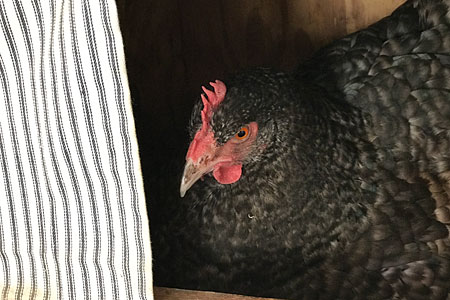
Train your hens to use a nest box when they first start producing eggs and they are less likely to lay eggs on the coop floor. Once they start laying on the floor, getting them to stop can be difficult. Here’s how to train your hens to lay eggs in a nest, not on the floor.
What are floor eggs?
Floor eggs are eggs found in places other than a nest box. They are typically laid on the coop floor litter, where they easily get dirty or cracked. Contaminated with bacteria, they are unsanitary to eat and unsuitable for hatching. Plus a hen may sample the contents of a cracked egg, creating a new problem — egg-eating chickens.
Why do chickens lay eggs on the floor?
Chickens lay eggs on the floor for many reasons. Most of the reasons have to do with nest design or placement. Maybe you provided too few nests. Or the nests could be too high off the coop floor. Or the hens just never learned to recognize the nests as the place where they should lay eggs.
How do chickens decide where to lay eggs?
The reason chickens lay eggs is to make more chickens. Therefore it’s logical that a hen will seek out a place to lay where the eggs will be safe from predation, and where the hen will be safe while hatching them.
For those reasons, hens typically seek out a dark, protected place to lay. In a brightly lit coop, they will be attracted to darkened nests. Where sunlight or overhead lighting brightens the nests, shielding them with flaps of fabric help provide privacy and darkness.
How do you stop floor eggs?
The best time to stop hens from laying eggs on the floor is before they start laying. Pullets need to be taught where to lay. Floor eggs are most likely to occur when pullets are just starting to lay and haven’t yet figured out where the nest boxes are or what they are for.
How do I train hens to lay eggs in a nest box?
The best way to train your hens to lay in a nest box is to teach them to recognize the nests you provide as the appropriate place to lay. Therefore, before pullets even start laying, place nest boxes close to, or directly on, the floor.
Once most of the pullets are laying in the nests, elevate the nests 18 to 20 inches above the floor by setting them on a platform or attaching them to the wall. Elevating nests discourages the chickens from scratching in them and dirtying or breaking eggs.
A nest egg — or fake egg — left in each nest helps teach pullets what the nests are for. Ceramic eggs are ideal for the purpose, because they look and feel just like real eggs.
Be sure to provide enough nests for the number of layers in your flock. If all the nests are occupied, a hen may decide not wait and end up laying on the floor.
The rule of thumb is to provide at least one nest for every four layers. To successfully train your hens to lay eggs in a nest, and not on the floor, having too many nests is better than having too few.
Helpful Links
10 Features Laying Hens Look for in a Perfect Nesting Box
The Right Height for Chicken Nests
How Many Chicken Nest Boxes Do You Need?
What Is the Best Liner for Chicken Nests?
And that’s today’s news from the Cackle Coop.
Gail Damerow has written numerous books about keeping poultry, many of them available from the Cackle Bookstore.


I have had flocks for many years. I generally have 20-35 laying hens. I also have 10 nest boxes. They normally use 3 or 4 boxes and I have seen 3 heritage breed hens in one box laying at the same time. As to putting them on the floor this promotes them scratching the bedding out and pooping in them. Nest eggs have proven to be the best attraction and training for using their nest boxes.